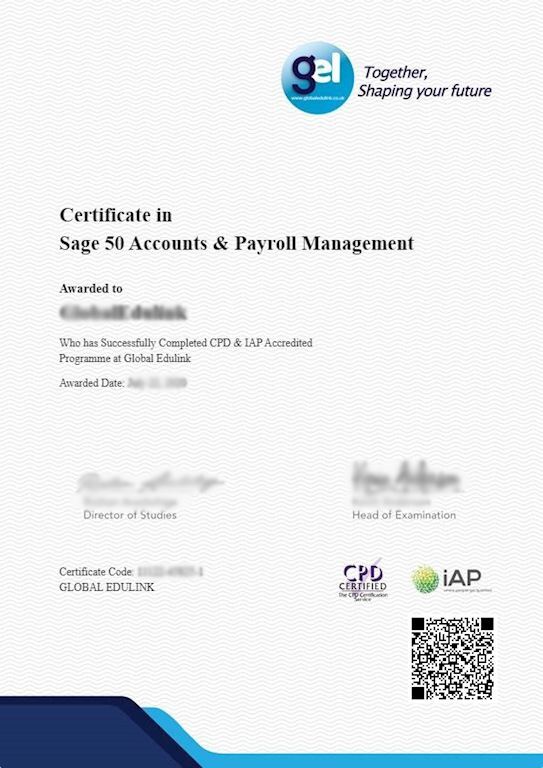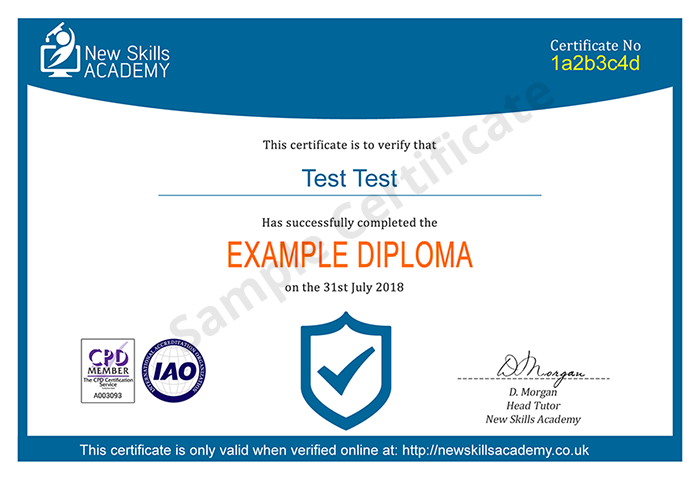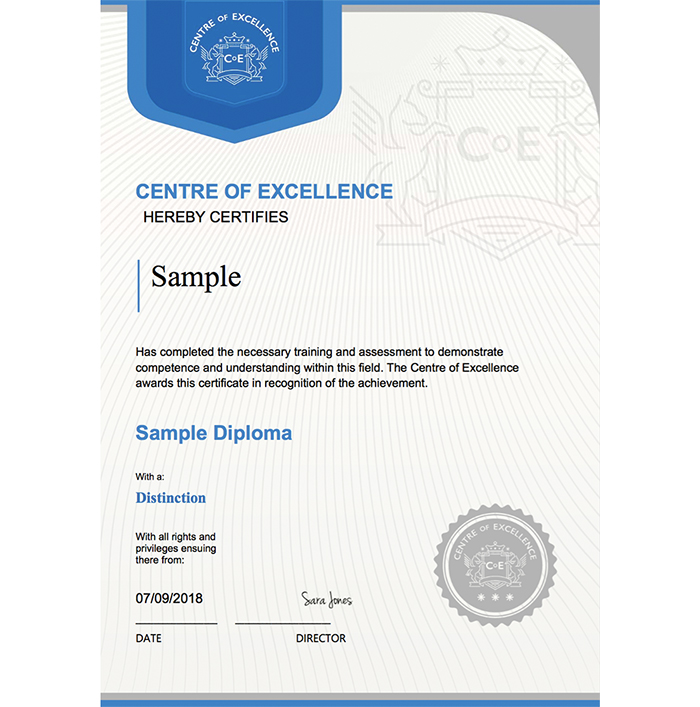
The Laimoon Teaching Bundle
Teaching Strategies for Higher Education
Global Edulink
- Duration / Course length: Upto 4 Hours
- Accrediting body: CPDiAP
- Certificates:
Is Your Teaching As Effective As It Could Be?
We support excellence in higher education, but we understand that society is changing, and with it teaching is changing. If you work in teaching this course can help you become the best educator you can be. Maintain a high quality of teaching with our useful modules, providing you with methods and strategies to use during your lessons. This `Teaching Strategies for Higher Education’ (USA Standards) course is particularly useful as it includes modules on how to use technology within your lessons.
Studying with Global Edulink has many advantages. The course material is delivered straight to you, and can be adapted to fit in with your lifestyle. It is created by experts within the industry, meaning you are receiving accurate information, which is up-to-date and easy to understand. This course is comprised of professionally narrated e-Learning modules, interactive quizzes, tests and exams. All delivered through a system that you will have access to 24 hours a day, 7 days a week for 365 days (12 months). An effective support service and study materials will build your confidence to study efficiently and guide you to secure your qualification.
Please Note: This Course is Based on USA Standards.
COURSE CURRICULUM
- Introduction to the course
- Respecting, knowing and understanding your students
- Being enthusiastic and passionate
- How to maintain academic rigor
- Using technology inside the classroom
- How to encourage active learning and critical thinking?
- Knowing and updating your field and material
- How to be flexible?
- How to connect to the world outside of academia
- Collaborating,engaging, and interacting with peers
- The conclusion
- High quality e-learning study materials and mock exams.
- Tutorials/materials from the industry leading experts.
- 24/7 Access to the Learning Portal.
- Benefit of applying TOTUM Discount Card.
- Recognised Accredited Qualification.
- Excellent customer service and administrative support.
At the end of the course learners will take an online multiple choice question assessment test. This test is marked automatically, so you will receive an instant grade and know whether you have passed the course.
Certification:
Successful candidates will be awarded a Certificate in Teaching Strategies for Higher Education.
Teaching Diploma
New Skills Academy
- Duration / Course length: Upto 40 Hours
- Accrediting body: CPDIAO
- Certificates:
Teaching Diploma - 5 Courses in 1 - CPD Approved
Have you dreamed of being a teacher or do you have a passion for working with children? Our teaching diploma course can provide you with a great online education experience with five courses rolled into one for added convenience.Our online course is compatible with all devices, which enables you to study at any time based on your availability using any device you feel comfortable with, whether it's a computer, laptop, tablet or smartphone.Introduction to Teaching DiplomaThe teaching diploma provides you with 82 information packed modules that takes approximately 40 hours to complete. The course gives you a lifetime access to the modules so you can refer back to the modules as and when you need to. During your studies you enjoy online support at all times.This diploma is CPD approved to give you complete peace of mind.What you will learn
This course comprises of five separate courses which provide you with the knowledge and skill you need as a teacher in the modern UK school. The modules will teach you the following:SEN Diploma - CPD Approved- Introduction to Special Educational Needs.
- The history of SEN. In this module learn the definition of special educational needs.
- Understand constructivism in the classroom and know your role as a teacher.
- Know the SEN Code of Practice. Get to understand it, know the key points and how to implement it into your classroom.
- Get an understanding on SENCO.
- Learn the different types of needs. Get a good understanding on how to manage severe learning disabilities in your classroom along with identifying different physical disabilities.
- Learn how to manage your time effectively, understand the consequences of bad behaviours and recommended methods for teaching social skills.
- Understand physical difficulties, sensory difficulties, cognitive impairments and so much more.
- Learn essential tips on dealing with children with autism and how to interact with them and help them learn in your classroom.
- Know why it's so important that you have SEN knowledge.
- Understand how to identify special learning difficulties.
- Understand how to manage anger.
- Gain valuable teaching approaches and strategies which you can incorporate into your classroom.
- Know the educational outcomes and your responsibilities.
- Learn how to train as a teaching assistant in the United Kingdom.
- Get a good understanding of schools as organisations.
- Learn how to support the development of students.
- Identify the best ways to support the school and the teacher.
- Tips to apply learning activities. Understand what activities will help with critical and creative thinking.
- Understand the best ways to teach numeracy skills.
- Learn about information and communication technology in the classroom.
- Understand the importance of play and learning.
- Learn how to support students with special educational needs.
- Identify how to determine students that are gifted and talented and how to work on this to help them be the best they can be, embracing their gifts.
- Determine how to work with children who do not speak English as their first language.
- Tips on how to engage in personal development and manage behaviour at all times.
- Learn how to get parents involved in their child's learning.
- Know how to lead in extracurricular activities.
- Introduction to Autism
- Learn what conditions are related to autism
- Gain an understanding of the autism spectrum
- What challenges young people with autism have to deal with
- Learn about the main causes of autism and how it is diagnosed
- ow people on the spectrum communicate
- Understand autistic behaviour patterns and setting limits
- Learn about the myths and theories connected with autism
- The different approaches used to treat and assist people with autism
- The importance of encouraging autistic children to socialise
- Best practices when dealing with autistic individuals, whether at home, school or in the community
- Organisational systems to help an autistic individual
- Important ethical and legal considerations that must be made when working with people with autism
- How to increase awareness about autism spectrum disorders
- Introduction to ADHD
- How a child with ADHD acts within a family and how parents can deal with the condition
- The symptoms to look out for and how to get a diagnosis
- Gain an understanding of how ADHD affects a child
- How ADHD affects a child in their adolescent years and how they can move forward into adulthood
- The latest research on adults with ADHD and how to get treatment
- Medication used to treat ADHD and the alternative therapies available
- How parents can seek help for their child
- The challenges faced by someone with ADHD and those around them
- Common misconceptions regarding ADHD
- The future for someone with ADHD
- Examples of success stories of those with ADHD
- How to help someone with ADHD
- Advice on where to get further help
- Gain an understanding into what dyslexia is
- The symptoms and causes of dyslexia
- How dyslexia is diagnosed
- Learn about the different types of dyslexia
- Understand how dyslexia affects the learning of phonics
- Why individuals struggle with writing and spelling
- Learn techniques for improving speaking skills
- What difficulties are associated with dyscalculia
- How dyslexic students can learn science subjects
- Learn about the Multi-Sensory Structured Language method of teaching
- Learn how to cope with dyslexia in the workplace
- Understand how other conditions are often seen with dyslexia
- Find out about the treatments used to help with dyslexia
- Why and when dyslexia can be classed as a disability under the law
Benefits
There are numerous benefits to taking this Teaching Diploma course. The advantages are as follows:- Fast track your career.
- Boost your knowledge and skill.
- Study at your own pace. You can complete the course full time or part time depending on your schedule.
- Enjoy online support throughout your studies.
- Get five courses combined into one at an affordable price.
- Take advantage of the lifetime access to the modules for future reference.
- Study modules online and with any device linked to the internet.
- CPD Approved.
- Industry recognised certification on successful completion.
- Download and print your certificate immediately on completion.
- Gain valuable insight and knowledge you can start using in the workplace without delay.
Special Educational Needs and Disability (SEND) Course
centre of excellence
- Duration / Course length: Upto 150 Hours
- Accrediting body: ABC Awards
- Certificates:
Every child is different and has their own unique pattern of how they learn about the world around them. Good classroom teaching should use a variety of teaching methods to reflect the different preferred learning styles of the children in the class, and to enable every child to be able to engage in learning.
When a child has special educational needs or a disability, learning can be much harder and it doesn't always happen as easily as it does for other children. Different styles of teaching, resources, additional equipment, or adaptations to the classroom may have to be made to enable children with additional needs in order for them to reach their full potential.
SEND - Special Educational Needs and Disability
Special Educational Needs and Disability is abbreviated to SEND, and this term will be used throughout this and the following modules of this course.
SEND education takes place in the context of current legislation, so the way it is implemented will alter from one country to the next, however, many of the principles are similar and there are commonalities in terms of best practice regardless of location.
UK Legislation
In the UK, Education Law is devolved to each of the four countries within the union, so there are differences in how SEND education is administered in England, Wales, Scotland and Northern Ireland.
Recent SEND reforms in England
In England, The Children and Families Act 2014 became law in September 2014. Part Three of this Act is entirely about SEND, and has made significant legislative changes, which have completely changed the framework in which children with additional needs are educated. It is a completely fresh approach with an emphasis on person-centred learning, raising expectations, and giving parents and children a much greater level of control in the decision-making process.
These SEND reforms have been described by many as "radical", and because they are so far-reaching, it will take until September 2018 to fully implement. Until then, aspects of the previous legal framework will still be in operation alongside the new system.
Although this new legislation only applies to England at the moment, other parts of the UK are looking to introduce similar reforms soon. These reforms are the result of changes in perception, thinking and attitudes towards disability, legislation which promotes principles of equality, inclusion and prevention of disability discrimination, and based on evidence-based research regarding achieving the best outcomes for children with SEND.
What is a Special Educational Need or Disability?
The term "Special Educational Needs" has a legal definition that is covered by both The Education Act of 1996 and the more recent Children and Families Act of 2014. To have a Special Educational Need, a child must have a learning difficulty or learning disability that makes it significantly harder for them to learn or to access education compared to most children of the same age.
The term "Disability" also has a legal definition under the Equality Act 2010. A person has a disability if they have a physical or a mental impairment that has a "substantial" and "long-term" negative effect on their ability to do normal daily activities.
The terms "Substantial" and "Long-Term" are also defined within the same Act as being:
Substantial - more than minor or trivial. For instance, it would take someone significantly longer to complete a normal daily task such as getting dressed.
Long-term - is defined as lasting for more than 12 months.
Altogether, around 16% of all children and young people will be identified as having some form of SEN at some stage during their education, although most of them will have their educational needs successfully met within the mainstream classroom. Just over 1% of children will have a level of SEN that is so significant that they may need a specialist educational provision, such as attending a special school.
The is a lot of cross-over between special educational needs and disability, and many children who have a disability will also have an additional special educational need. However, this isn't always the case, and every child's need should be addressed individually.
There are many different types of educational need, and even with children who have broadly similar needs, the approaches each child will benefit from may vary widely. Here are some of the types of need that the term SEN covers:
- A specific learning difficulty, such as dyslexia, dysgraphia, dyspraxia or Attention Deficit Hyperactivity Disorder
- A learning disability, which can be mild, moderate, severe or profound and multiple
- A Speech and Language Disorder
- A Sensory Processing Disorder
- An Autistic Spectrum Disorder
- A behavioural, emotional or social difficulty
Modules
- Module 1: Introduction
- Module 2: Childhood Learning Disabilities
- Module 3: Autism
- Module 4: Behavioural, Social and Emotional Difficulties
- Module 5: Specific Learning Difficulties. Dyslexia, Dyscalculia, Dysgraphia and Dyspraxia
- Module 6: Speech, Language & Communication Needs (SLCN)

.jpg)

.jpg)




.png)

.png)
